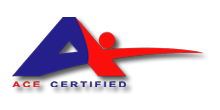Training for strength and flexibility is a must. You must use it to support your techniques. Techniques alone are no good if you don't support them with strength and flexibility." - Bruce Lee
Bruce Lee's training regimen involved all the components of total fitness. Apart from his daily martial arts training, Lee engaged in supplemental training to improve his speed, endurance, strength, flexibility, coordination, rhythm, sensitivity, and timing.
Bruce Lee learned early on that the role strength played in the overall scheme of things was of vital importance, not only for its own sake but also because an increase in muscular strength brings with it greater mastery of striking techniques, increased speed and endurance, better-toned muscles, and improved body function. However Lee did not regard weight training as the "Holy Grail" to a athletic success. He recognized it for exactly what it was an important facet of total fitness that had to be integrated into one's training schedule along with other exercises to improve one's technique, speed, agility, excetera.
"My strength comes from the abdomen. It's the center of gravity and the source of real power." - Bruce Lee
Bruce Lee was particularly impressed with the fact that strength training, which typically involved weight lifting, could increase one's speed and endurance capabilities. His belief that a martial artist must engage in training methods apart from the techniques and movements of the art he or she has been trained in was based on purely scientific grounds.
"If you are talking about sport, that is one thing. But when you are talking about combat - as it is - well then, baby, you better train every part of your body" - Bruce Lee
When Bruce Lee devised muscle development programs either for himself or his students, he always stressed compound exercises - that is, exercises that required two more muscle groups to be involved in the execution. Lee's reasoning was simple: he wanted harmony among all of his muscle groups so they could generate power in concert and would combine to accomplish a single objective.
"Above all, never cheat on any exercise city; use the amount of weight that you can handle without strain." - Bruce Lee
Bruce Lee experimented with many different martial arts and supplemental training programs. For example by looking at his 1963 training records we learn that Lee was working out and what would have to be described as a traditional fashion: he was performing forms or spending hours on the wooden dummy.
By 1970 his workouts were perfect examples of efficient cross training weight training for strength, running and cycling for cardiovascular efficiency, stretching for flexibility, the heavy bag for timing and applied power, and the speed bag for developing rhythm and timing.
"Some guys made not believe it, I spent hours perfecting whatever I did." - Bruce Lee




.jpg)




